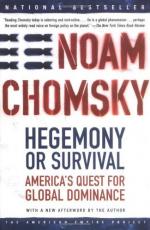|
This section contains 1,655 words (approx. 6 pages at 300 words per page) |

|
In the 1950s the formal study of languages—linguistics—was revolutionized almost single-handedly by Noam Chomsky, a linguist, M.I.T. professor, and political activist.
Chomsky's Linguistics
Traditional linguistic theory has two major subdivisions: syntax and semantics. Syntax is the study of linguistic form, and its "primary concern is to determine the grammatical sentences of any given language and to bring to light their underlying formal structure," Chomsky writes. Semantics, on the other hand, is concerned "with the meaning and reference of linguistic expressions. It is thus the study of how this instrument . . . is actually put to use in a speech community." It is through syntax that the fundamental nature of language can best be understood, in Chomsky's view. Much effort, he notes, has been expended in attempts to answer the question, "how can you construct a grammar with no...
|
This section contains 1,655 words (approx. 6 pages at 300 words per page) |

|


